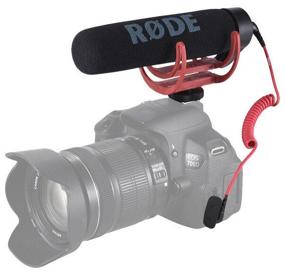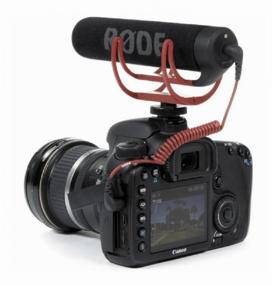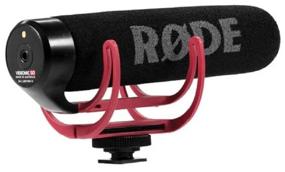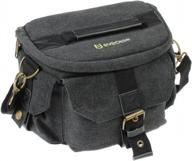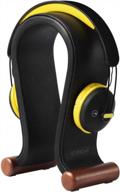Description of On-camera microphone RODE VideoMic GO
The Rode VideoMic GO was Rode''s first affordable directional microphone, if by "affordable" we mean sub-$100 models. Compared to its closest model, the VideoMicro, VideoMic GO''s super-cardioid pickup pattern cuts off sideways sound more, but at the same time captures a small area in the back, which the Cardioid VideoMicro just completely ignores. The VideoMic GO is therefore slightly better suited for mid-range recording in noisy environments, but the operator needs to be careful not to have a loud sound source immediately behind it. When recording in a quiet environment and from a short distance (1-3 meters), the difference is almost imperceptible. To capture sound from a long distance (5-10 meters), both microphones are poorly designed, for these purposes you need to use devices of a higher level, such as VideoMic Pro, or use a separate sound recording device on the subject (table or lavalier microphone).
The VideoMic GO body is made of a single piece of thermoplastic and has a built-in shock-absorbing Rycote Lyre stand, which perfectly compensates for camera noise (especially such as camera contact with something foreign). The microphone comes with a foam windshield that handles most of the howling from air currents. This protection can be further enhanced with the furry DeadCat GO, sold separately. VideoMic GO uses phantom power from a camera or recorder, which, on the one hand, makes it convenient for shooting (no need to worry about batteries, you can not forget to turn on the microphone), and on the other hand, it does not allow you to increase the sensitivity. For installation on additional holders, the microphone has a 3/8" tripod socket. Using the Rode SC7 cable, it can be connected directly to mobile devices: smartphones and tablets.
If compared with the "big brother" VideoMic Pro, then the latter, of course, has a significantly higher sound quality - VideoMic GO seems "dry" compared to it. VideoMic Pro also has the ability to quickly increase the sensitivity (+20 dB) when working at a long distance and reduce it when working at a short distance (-10 dB). Finally, VideoMic Pro has a built-in low-pass filter that allows you to cut frequencies below 80 Hz, which saves time in post-processing.
Extended Warranty: Register your purchase on the Rode website and receive an extended manufacturer''s warranty: 2 years.
Acoustic principle: linear gradient Capsule size: 0.50 inch Pickup pattern: Supercardioid Frequency response: 100 Hz - 16 kHz Maximum sound pressure (SPL): 120 dB Sensitivity: -35.0 dB (17.8 V @ 94 dB SPL) Signal-to-noise ratio: 60 dB SPL (A- weighted perl EC651) A-weighted noise level equivalent: 34 dB-A Weight: 73 g Dimensions: 79 x 70 x 167 mm
Hide


